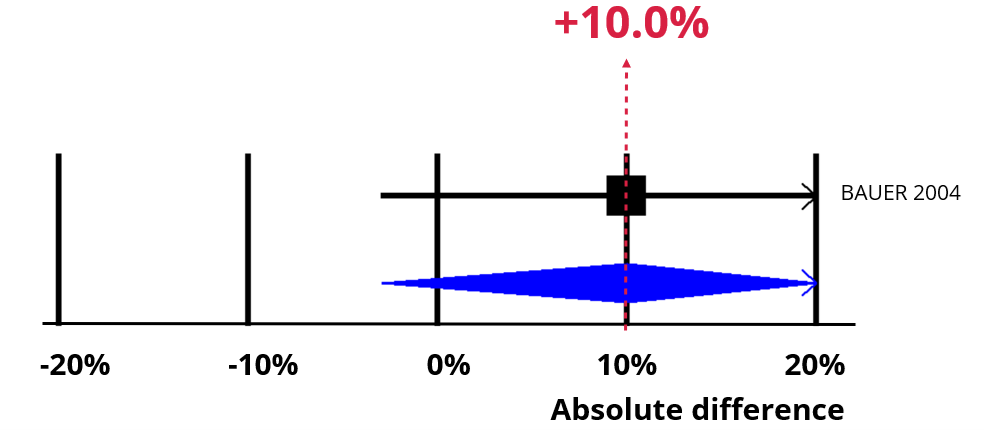Participants receive a monetary incentive (check or voucher) along with their sample collection kits. Response rates are the highest for the highest monetary value ($10).
Addition of monetary incentives to all trial arms may favour the higher value incentive to increase retention.
An increase of 10% (95% confidence interval = 3% to 23%).
GRADE Low certainty.
We recommend that trialists consider adding monetary incentives to all trial arms.
See Resource bundle below for details on how to implement financial incentives at all trial arms.
Imagine initial retention is 65% of those approached. You have a trial with 100 participants that needs responses from 80 to meet its statistical power calculations. Retention of 65% means that you will be 15 responses short (see chart below).

Now imagine using financial incentives at all trial arms. The chart below shows the impact of an absolute increase of 10% (95% CI = 3% to 23%). Retention is now 75%, which means our best estimate is that you would now only be 5 responses short.


Trial Forge will make trials more efficient by looking for marginal gains across all trial processes, from research question to implementation into routine care. It will encourage everyone connected with trials to be more sceptical of what we do by asking for the evidence behind all of our trial decisions.